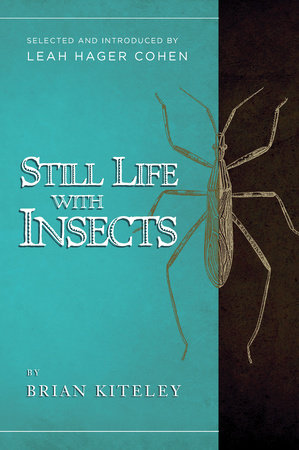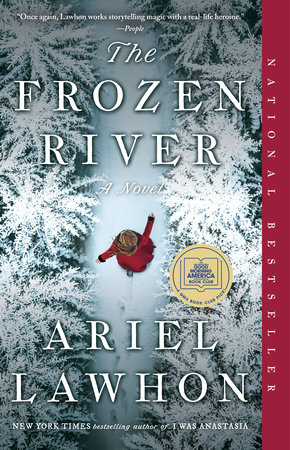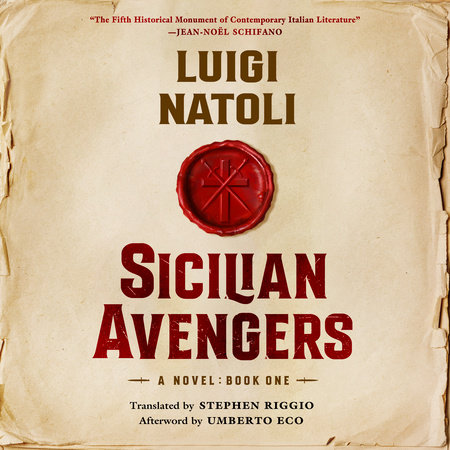

Still Life with Insects
By Brian Kiteley
Introduction by Leah Hager Cohen
By Brian Kiteley
Introduction by Leah Hager Cohen
By Brian Kiteley
Introduction by Leah Hager Cohen
By Brian Kiteley
Introduction by Leah Hager Cohen
Category: Historical Fiction
Category: Historical Fiction

-
$14.00
May 12, 2015 | ISBN 9781940436203
-
Apr 01, 2015 | ISBN 9781619026506
YOU MAY ALSO LIKE

Sicilian Avengers: Book Two

The Life and Opinions of Tristram Shandy, Gentleman

Seeing Further

Set My Heart on Fire

The Frozen River: A GMA Book Club Pick

The Memory Dress

Eleanore of Avignon

Peerless (Novel) Vol. 2

Sicilian Avengers: Book One
Praise
“Although a bug collector’s field notes may not sound like an imaginative or exhilarating backdrop, Brian Kiteley’s distinctive style plays well to such a challenge. His greatest accomplishment is understatement. In a mere 103 pages, a sensitive, complex man becomes a brittle old man, fully experiencing the passing of time and life. The stories that fill these journal entries, sparse and widely spaced over decades, are necessarily mere vignettes, bare sketches. Still Life with Insects is a deceptively simple story, characterized by restraint, but with many layers of allegory available to the close reader.”—Shelf Awareness
“Still Life with Insects is to the generational novel what Padgett Powell’s Edisto was to literary comedy—that brilliant reinvention by a young new writer of something that’s been done many times before.” Rod MacLeish, “Morning Edition,” National Public Radio, September 12, 1989
“Brian Kiteley’s novel is sublime, serious, elating, illuminating moments of our lives like a Hopper painting.” Mary Robinson
“The Narrator in this lovely novel may have set some kind of record for the longest, sweetest, fastes life ever lived. There are books twice as long as this one that don’t tell us half as much about life’s wonder.” Rick Bass
“Still Life with Insects is unique for its oblique sentiment, its associative structure, its slow, lyrical welling of effect. It is perhaps more a European book than American—Calvino and Max Frisch come to mind. And the true daring: the novel is a still life—a quiet picture that slowly resonates and changes and keep you looking when you don’t quite know, or care, why. – Padgett Powell
“Still Life with Insects is short and splendidly risky. The narrator’s voice is folksy but works at cross–purposes to the daring formal structure of the novel, and produces that rarest of literary things, an original. In the space of 114 dense pages, Kiteley, operating with the sympathy and patient method of a good surgeon, lays bare a life.” Eli Gottlieb, Elle, August 1992
“This is a prose that avoids fads and tricks and becomes poetry in its resolute search for what lasts. Still Life with Insects is a gem of a book, small in size, large in its satisfactions. It has won a permanent home in my affections.” Dan Cryer, Newsday, July 10, 1989
“The distinctive narrative form of Kiteley’s intelligent first novel commands attention and resonates with insights. In a series of spare, often lyrical vignettes (the first dated 1945, the last 1984), narrator Elwyn Farmer records obliquely the circumstances of his life as he shakily finds his way back to emotional health following a nervous breakdown. He is a Minnesota chemist and dedicated amateur entomologist, and the occasion and rubric for each entry is a sighting made of a beetle species. Into his ken come not only the bugs but his wife, two sons, a brother, business associates, grandchildren––one of whom is writing a novel about him. In his carefully observant manner, Kiteley creates the virtual opposite of the conventional sprawling family novel; this narrative is a miniature, peeking into the dramas of uneventful middle–class lives as with a microscope. As in art miniatures too, the vividness of the closeups comes at the expense of scope and breadth. Nevertheless, there is depth and poignancy in the epiphanies these moments create.” Publishers Weekly
“In this slight, lyrical novel, Kiteley portrays the quiet life of bug collector Elwyn Farmer by juxtaposing entries from his entomology journals with scenes from Farmer’s family and business life. Given the structure, reading this work is much like leafing through a picture album and recapturing each moment in time, savoring its uniqueness, pondering its significance in the course of life. Unfortunately, the lack of plot provides little forward movement and even less sense of resolution at the end. An interesting concept, but ultimately unsatisfying reading.” – Library Journal
“Elwyn Farmer loves beetles. He is as familiar with the habitats, markings, and mating preferences of the Kirby Backswimmer (Notonecta kirbyii), the Dainty Tiger (Cicindela lepida), or the Harlequin Cabbage Bug (Murgantia histrionica) as he is with the rows, relationships, and daily routines of his own wife, children, and colleagues. His is a scientific eye, looking across from the bustle of his work place or kitchen table, to peer beneath damp leaves, scrutinize dusty corners, squint through stagnant pond water. Still Life with Insects is his story, a volume as small, intricate, and delicate as the objects of his entomologist’s fascination. Within these 40 years of chance encounters with triffids, larvae, and maggots, though, are pinned flutteringly detailed incidents awkward exchanges with teenage grandchildren, tensions at the office dance, touching glimpses of marital intimacy. Hold these up to the light and you get a clear sense of this self–effacing man (as detached from the trials and tribulations of domestic life as he is from cantharidin–secreting beetles and wasp stings ‘I seem to be immune’). It is a beautifully and humorously observed picture of American life collected, mounted, labeled, sifted.” —London Times
“There is nothing harder in fiction than the creation of a good man. When the writer chooses to couch his narrative in the first person, the task becomes almost impossible. Kiteley makes it work by recognizing that absorption in a science or craftsmanship or art can be a man’s salvation even in societies that least value such disinterestedness. As Farmer’s regard turns from the natural world to himself there is no alteration in that tone of cool observation which leaves no room for self–pity or falsity. It is possible, if there is some element of autobiographical homage being paid, that Brian Kiteley may not manage anything so perfectly achieved as this first novel.” Frederic Lindsey, Sunday Telegraph (England), May 20, 1990
“Still Life with Insects is a quiet, delicate, American novella about Elwyn Farmer, a quiet, delicate, American pest extermination researcher and amateur entomologist. This may not be the most encouraging of summaries, but it is appropriate for a book that shies away from self–advertisement, preferring to spring its pleasures on an unsuspecting reader. Interwoven with microscopic observation of strangers in roadside cafes, motes of dust in the sunshine, and the taste of cheese and ham sandwiches, there are spare but astonishingly vivid sketches of people and events—Farmer’s wife, swatting flies and declaring plaintively that she is no longer pretty, or Whit Wheaton, Farmer’s colleague, accompanying him on a bug collecting trip then returning home to commit suicide. A portrait of Farmer emerges: sad, kindly, odd, but deeply dignified, and in his unassuming way, noble. This quirky, beautifully crafted story avoids sentimentality and, in spite of its thoughtful sobriety, elevates the spirits.” Zoe Heller, The Observer (England), April 1990
“After his friend’s suicide Elwyn and his wife, Ettie, have the widow over to stay with them. During dinner the phone rings. Ettie answers. It is Elwyn’s brother–in–law with the news that Elwyn’s sister has killed herself with a barbiturate overdose. Ettie keeps the news to herself until the widow goes to bed. This is Elwyn’s reaction: “I pieced together the delicate pattern of incidents . . . and gradually fell in love with my wife all over again. Her heroic reserve throughout the night of talk about one man’s life and death, while withholding her own painful knowledge, filled me with a strong longing for her.” What is curious, and yet curiously believable, about this reaction is Elwyn’s lack of immediate feeling, or expression of feeling, for his sister’s death. This affectlessness, amidst all the detail, is what gives Elwyn, and the book too, an odd dryness—and gives the book’s title, Still Life with Insects, its appropriateness. A still life is inanimate, although I suspect a pun expresses Elwyn’s escape from human things: Still, Life with Insects.” —Washington Post
“A bug collector’s field notes seem an unlikely narrative device for a novel. But Still Life with Insects, by Brian Kiteley, takes the mysteries of nature detailed in the journal of Elwyn Farmer to create a lovely, quirky story about a complex man struggling to live a simple life. Farmer, a chemist for a Canadian flour company, had once hoped to study insects as a profession rather than a hobby, but his education came to an abrupt halt during the Depression, when a brother stole his savings. He is a prisoner of corporate life, unchallenged and unrecognized. His family is repeatedly uprooted by transfers and he is the victim of recurring episodes of mental confusion. The novel begins at the close of World War II when Farmer, 43, has just returned to work after a nervous breakdown. In a small stagnant pool at a dry riverbed he collects specimens of a swimming beetle that might be a metaphor for his own stalled life: “Underwater, it can stop still for hours at any depth, patiently awaiting gnats and flies that land on the surface.” The ensuing 40 years bring recurring breakdowns and a growing collection of beetles with metaphoric meaning. Farmer’s hobby and his family are his chief weapons to forestall episodes of confusion and to recover after them. His wife is beautiful and devoted but often exasperated by his eccentricities. He considers himself a failure as a husband and as a father to his two sons, who judge him less harshly. Eventually, two grandsons share his interest in insects, and through one, Farmer gains insight into what the hobby has meant. Comparing his grandson’s use of marijuana with insect–collecting, Farmer writes, “I often went into a sort of trance when I was out collecting, or even as I worked in my basement, mounting, labeling, sifting, building boxes.” The reader suspects that the author might in fact be one of these grandsons, who is poring over Farmer’s notes at the end of the book, researching a planned novel about his grandfather. The notion adds extra impact to the affection that rises from every page of this short, beautifully written novel.” —Chicago Sun–Times
21 Books You’ve Been Meaning to Read
Just for joining you’ll get personalized recommendations on your dashboard daily and features only for members.
Find Out More Join Now Sign In










